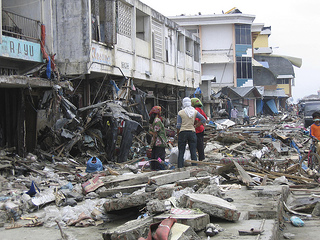 As natural disasters in the Asia-Pacific continue to grow in frequency and intensity, economies in the region should look at greater investments in disaster risk management to sustain growth, a study by the Asian Development Bank (ADB) recommends.
As natural disasters in the Asia-Pacific continue to grow in frequency and intensity, economies in the region should look at greater investments in disaster risk management to sustain growth, a study by the Asian Development Bank (ADB) recommends.
“The growing incidence of natural disasters in Asia and the Pacific—where four of five cities globally classified as at extreme risk are located—threatens to undermine seriously rapid economic progress, calling for a much stronger focus among governments on disaster prevention,” according to the new study, ADB’s Response to Natural Disasters and Disaster Risks.
The region has borne the brunt of the physical and economic damage of the sharp rise in natural disasters since the 1980s. Its people are four times more likely to be affected by natural disaster than in Africa and 25 times more than in Europe or North America. With 25 percent of the world’s gross domestic product, the region accounted for 38 percent of the economic losses due to natural disasters during 1980–2009.
The study calls for projects and programs that put greater emphasis on improving disaster prevention. The region’s economies should recognize that natural disasters, particularly storms and floods, are becoming endemic and that their increasing frequency and severity can slash economic growth and development.
“We have thought for too long that natural disasters come and go, that they are just an interruption to development, and that they can be dealt with after they strike,” said Vinod Thomas, director general of ADB’s Independent Evaluation, which conducted the study.
“However, there is growing international recognition that the incidence and impact of natural disasters are increasing because of persistent poverty, population growth, and climate change.”
In its review of ADB’s disaster-related programs, the study notes that disaster prevention accounted for one-third of investment, compared with two-thirds spent on disaster recovery. Yet, by some measures, one dollar invested today in reducing disaster risk saves at least four dollars in future relief and rehabilitation costs.
“Throughout the region, we must recognize that investments in disaster risk management are an essential means to sustaining growth and poverty reduction,” said Thomas.




